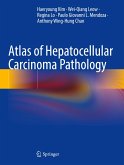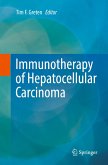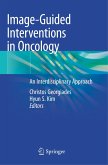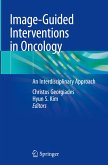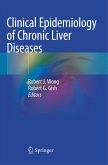This atlas is designed to be a user-friendly bench-side reference for pathology trainees and general pathologists in handling and interpreting specimens of hepatocellular carcinoma. It provides over 550 high-quality gross and microscopic photos focusing on hepatocellular carcinoma and its mimickers, and demonstrating a full range of various histological variants of hepatocellular carcinoma. Introductory text in each chapter summarises salient clinical associations, pathological features, and molecular alterations of different variants of hepatocellular carcinoma. Differentiation between hepatocellular carcinoma and its mimickers is illustrated through various case studies.
The authors are nationally and internationally recognized hepatopathologists in the Asian-Pacific regions (Hong Kong, Korea, the Philippines, and Singapore), in which the incidence of hepatocellular carcinoma is high.The authors are nationally and internationally recognized hepatopathologists in the Asian-Pacific regions (Hong Kong, Korea, the Philippines, and Singapore), in which the incidence of hepatocellular carcinoma is high.The authors are nationally and internationally recognized hepatopathologists in the Asian-Pacific regions (Hong Kong, Korea, the Philippines, and Singapore), in which the incidence of hepatocellular carcinoma is high.The authors are nationally and internationally recognized hepatopathologists in the Asian-Pacific regions (Hong Kong, Korea, the Philippines, and Singapore), in which the incidence of hepatocellular carcinoma is high.The authors are nationally and internationally recognized hepatopathologists in the Asian-Pacific regions (Hong Kong, Korea, the Philippines, and Singapore), in which the incidence of hepatocellular carcinoma is high.The authors are nationally and internationally recognized hepatopathologists in the Asian-Pacific regions (Hong Kong, Korea, the Philippines, and Singapore), in which the incidence of hepatocellular carcinoma is high.The authors are nationally and internationally recognized hepatopathologists in the Asian-Pacific regions (Hong Kong, Korea, the Philippines, and Singapore), in which the incidence of hepatocellular carcinoma is high.
The authors are nationally and internationally recognized hepatopathologists in the Asian-Pacific regions (Hong Kong, Korea, the Philippines, and Singapore), in which the incidence of hepatocellular carcinoma is high.The authors are nationally and internationally recognized hepatopathologists in the Asian-Pacific regions (Hong Kong, Korea, the Philippines, and Singapore), in which the incidence of hepatocellular carcinoma is high.The authors are nationally and internationally recognized hepatopathologists in the Asian-Pacific regions (Hong Kong, Korea, the Philippines, and Singapore), in which the incidence of hepatocellular carcinoma is high.The authors are nationally and internationally recognized hepatopathologists in the Asian-Pacific regions (Hong Kong, Korea, the Philippines, and Singapore), in which the incidence of hepatocellular carcinoma is high.The authors are nationally and internationally recognized hepatopathologists in the Asian-Pacific regions (Hong Kong, Korea, the Philippines, and Singapore), in which the incidence of hepatocellular carcinoma is high.The authors are nationally and internationally recognized hepatopathologists in the Asian-Pacific regions (Hong Kong, Korea, the Philippines, and Singapore), in which the incidence of hepatocellular carcinoma is high.The authors are nationally and internationally recognized hepatopathologists in the Asian-Pacific regions (Hong Kong, Korea, the Philippines, and Singapore), in which the incidence of hepatocellular carcinoma is high.


